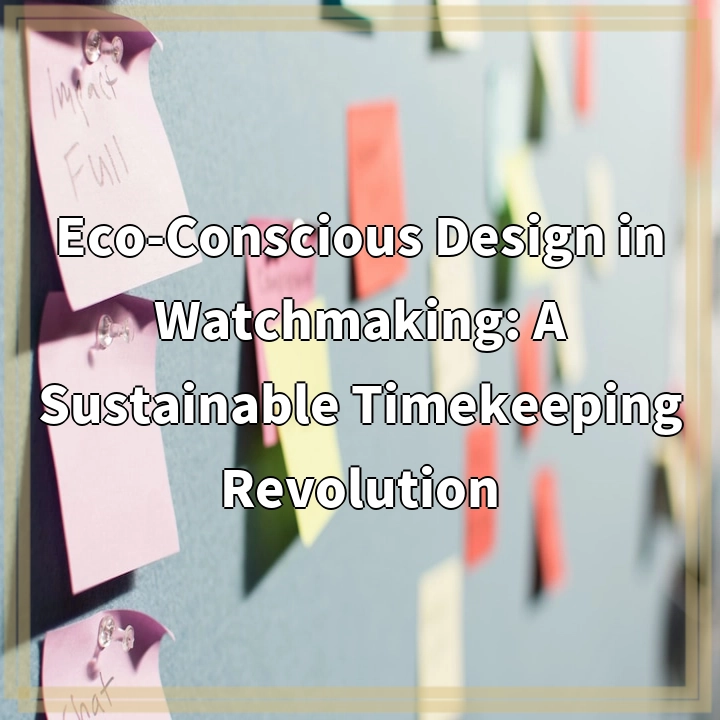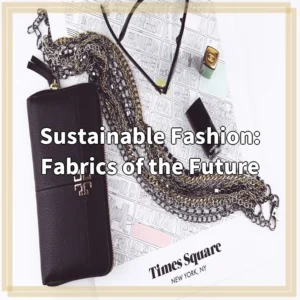
What is Eco-Conscious Design in Watchmaking?
Eco-conscious design in watchmaking refers to the implementation of sustainable practices and principles throughout the entire watch manufacturing process. It involves considering the environmental impact of materials sourcing, production techniques, and the longevity and recyclability of the timepieces.
Real-World Problems Associated with Eco-Conscious Design
1. Raw Material Extraction
The watchmaking industry heavily relies on the extraction of precious metals and minerals, such as gold, silver, and gemstones. Traditional mining practices can have devastating consequences for ecosystems, such as deforestation, water pollution, and habitat destruction.
2. High Energy Consumption
Watch manufacturing involves various energy-intensive processes, including material refinement, mechanical assembly, and quality control. The excessive use of non-renewable energy sources contributes to carbon emissions and further depletes finite resources.
3. E-Waste and Disposal
Obsolete or broken timepieces can contribute to the growing e-waste problem when not disposed of properly. These electronic devices often contain hazardous materials, including batteries and electronic components, which can harm the environment if not recycled or disposed of responsibly.
4. Fast Fashion Mentality
The watch industry, like many others, has been affected by the fast fashion mentality, where products are produced quickly, cheaply, and with a short lifespan. This encourages a throwaway culture, leading to more waste and an increased demand for new, unsustainable timepieces.
5. Lack of Transparency
Many watch manufacturers lack transparency regarding their supply chain and manufacturing practices. This makes it difficult for consumers to make informed decisions about environmentally responsible choices and support brands that prioritize sustainability.
6. Water Usage
The watchmaking industry relies on water for various stages of production, including cleaning, cooling, and lubrication. The excessive consumption of water, coupled with inadequate wastewater treatment, can have harmful effects on local ecosystems and communities.
7. Limited Circular Economy Initiatives
The concept of the circular economy, where resources are reused, recycled, or repurposed, is not yet widely adopted in the watch industry. This limits the potential for reducing waste and maximizing resource efficiency in the production and disposal of timepieces.

Solutions for Eco-Conscious Design in Watchmaking
1. Ethical and Responsible Material Sourcing
Watch manufacturers can prioritize responsible sourcing by using recycled materials, supporting fair-trade mining practices, and opting for sustainable alternatives to precious metals and gemstones.
2. Adoption of Renewable Energy
By transitioning to renewable energy sources such as solar or wind power, watch manufacturers can significantly reduce their carbon footprint and minimize their reliance on non-renewable energy.
3. Emphasis on Repair and Longevity
Encouraging repairability and designing watches to have a longer lifespan can reduce the need for frequent replacements and mitigate the environmental impact associated with the production and disposal of short-lived timepieces.
4. Responsible E-Waste Management
Implementing e-waste management strategies, such as establishing take-back programs or partnering with certified recycling centers, can ensure the proper disposal and recycling of watch components and reduce the accumulation of electronic waste.
5. Shift towards Sustainable Fashion
Encouraging sustainable fashion practices in the watch industry involves promoting timeless designs, promoting capsule collections, and educating consumers about the environmental impacts of fast fashion, encouraging them to make conscious choices when purchasing timepieces.
6. Transparency and Accountability
Watch manufacturers should prioritize transparency by openly sharing information about their supply chain, manufacturing processes, and environmental initiatives. This allows consumers to make informed decisions and support brands that align with their sustainability values.
7. Water Conservation and Management
Implementing water-saving measures, investing in water-efficient technologies, and adopting responsible wastewater treatment practices can help reduce the water footprint associated with watch production and minimize harm to local ecosystems and communities.
8. Circular Economy Approaches
Embracing the principles of the circular economy, such as designing watches for disassembly and reuse, exploring recycling and upcycling programs, and enhancing product traceability, can contribute to a more sustainable and resource-efficient watch industry.















